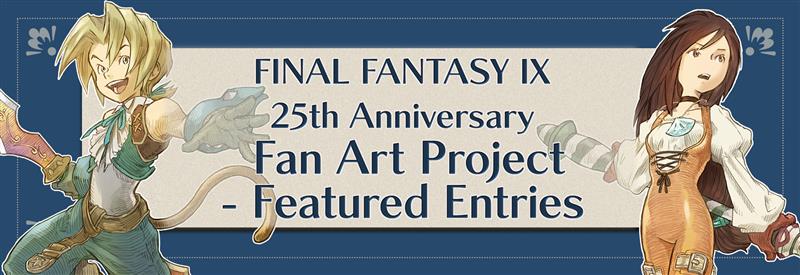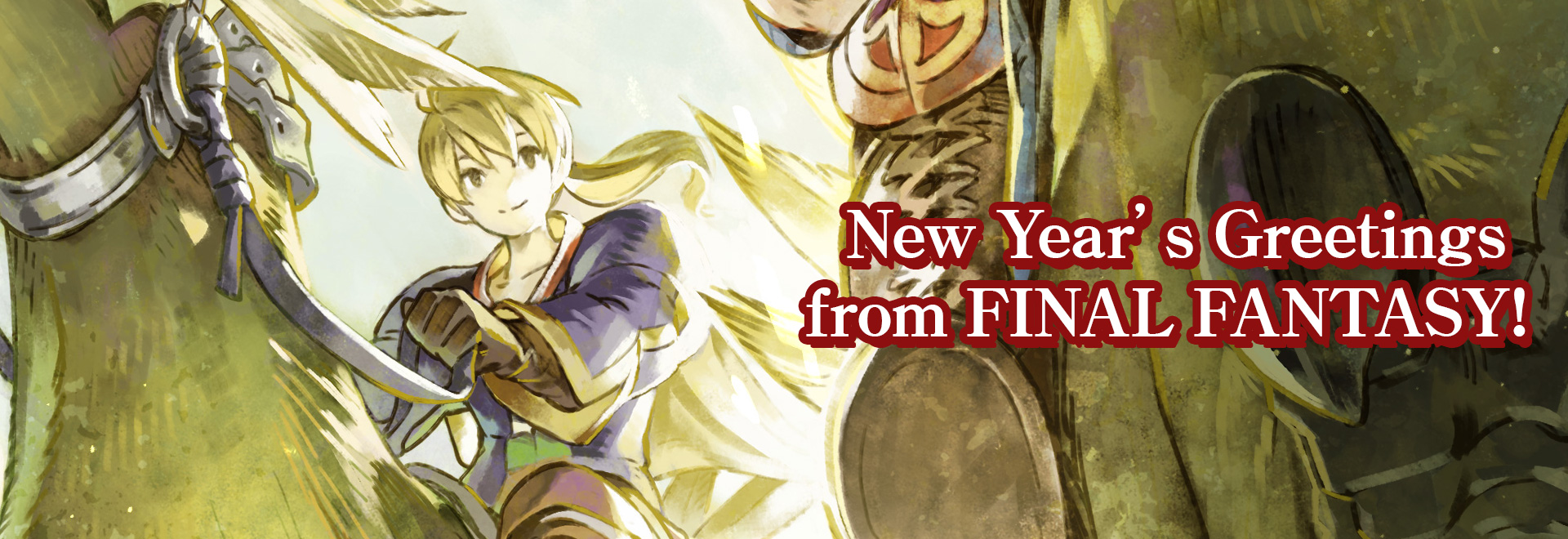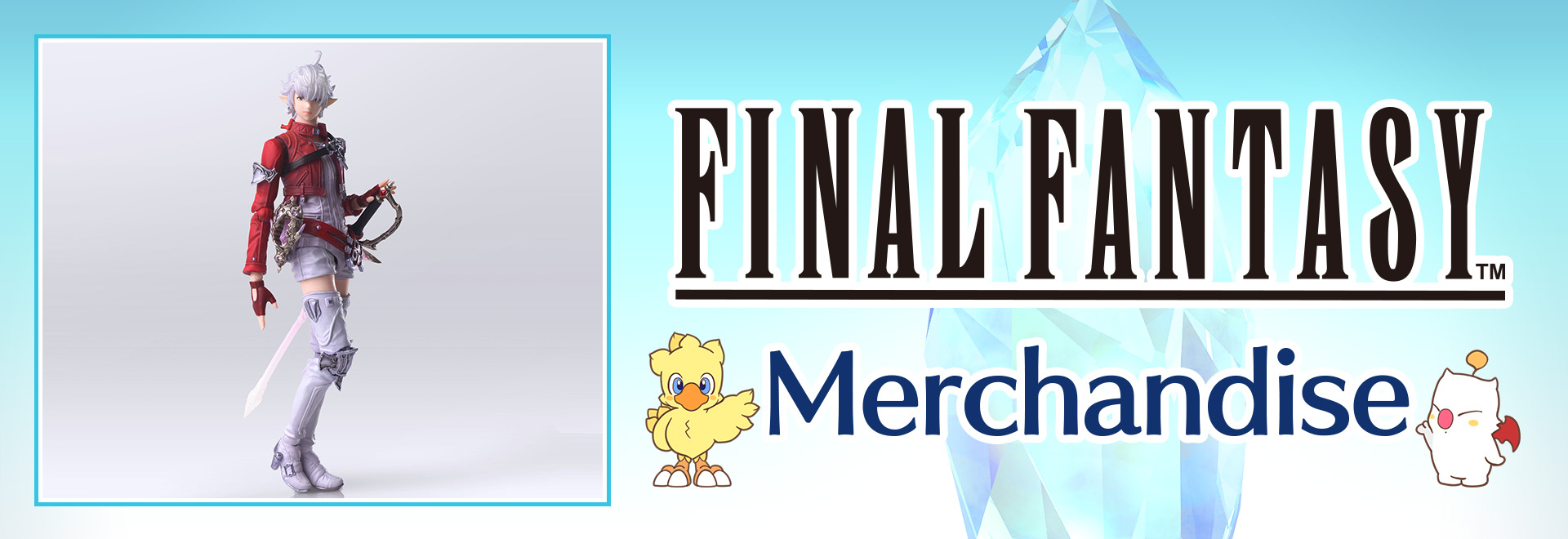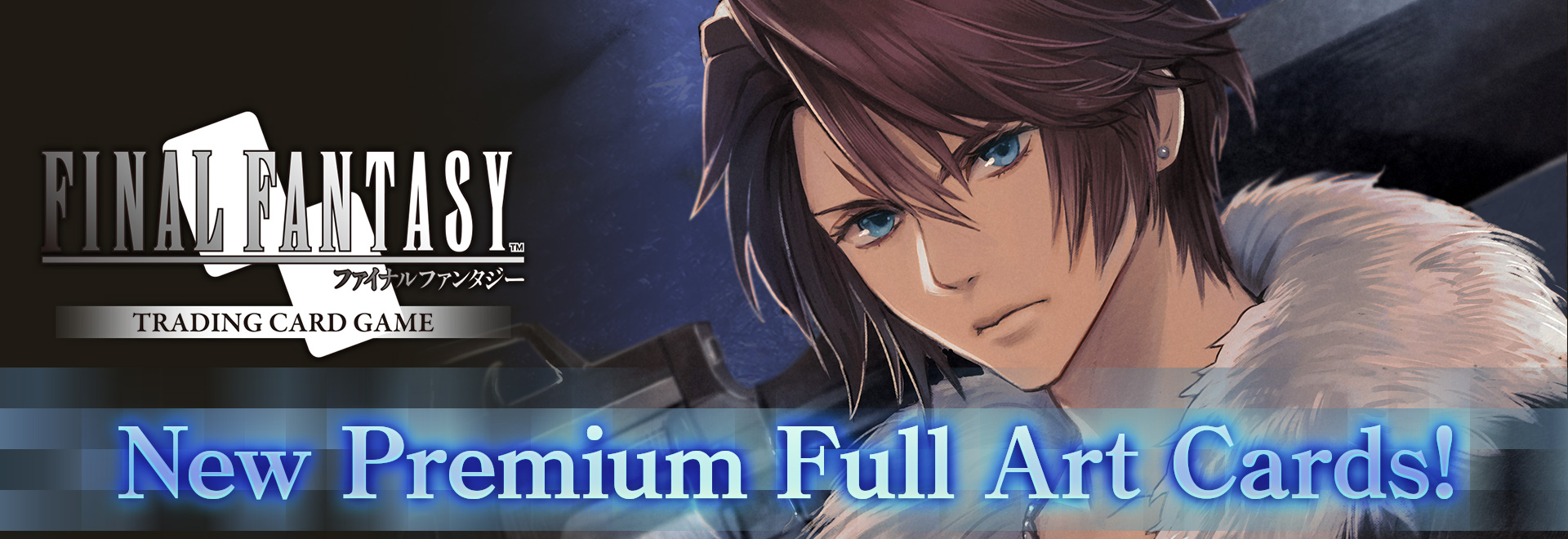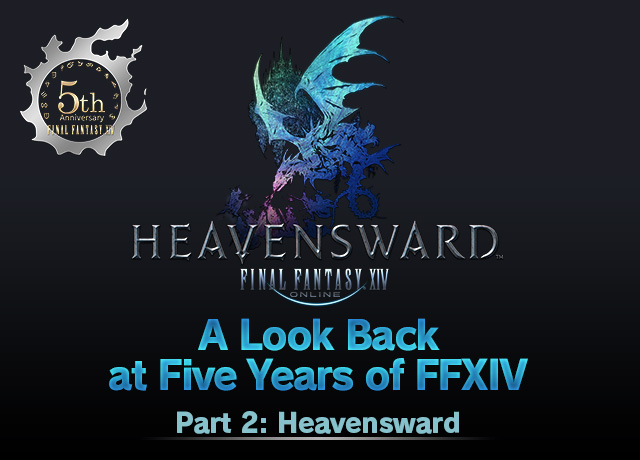
In this three-part symposium, core members of the FFXIV team discuss the development of the game over the past five years, focusing on A Realm Reborn, Heavensward, and Stormblood. This second installment covers the first expansion, Heavensward, and how it was developed concurrently with patches for A Realm Reborn.
A Look Back at Five Years of FFXIV, Part 1: A Realm Reborn
Participants
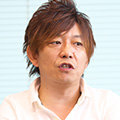
Naoki Yoshida
Producer and Director
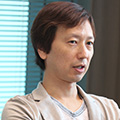
Kazutoyo Maehiro
Development Supervisor
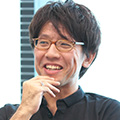
Takeo Suzuki
Art Team Lead

Kenji Sudo
Battle Content Designer

Michael-Christopher Koji Fox
Translation Direction & English Localization
- It’s All Just a Blur! On the Eve of Heavensward
- What Sort of “Fantasy”? Expanding Horizons with Heavensward
- Preserving the Spirit of FFXIV while Respecting Its Predecessors
- The Controversial Gordias (Savage)
- A Sweeping Narrative Crafted in Intricate Detail
- Exploring New Territory
- Reflecting on Heavensward
It’s All Just a Blur!
On the Eve of Heavensward
―What can you tell us about the production of Heavensward?
Maehiro: Honestly, I don’t remember anything that happened [laughs].
Yoshida: I don’t remember... Though, I suppose I do recall saying, “MMOs sink or swim with the first expansion!” when we started.
Sudo: I don’t remember much before release, but I do remember finishing up and going home early because I wanted to play right afterward.
Koji: I remember it well. Mainly because I was translating FATEs up until the day before we sent the master build, screaming, “Two hundred more translations to go!” [laughs].
Yoshida: The schedule for Heavensward was a nightmare...
Koji: We were working on both Heavensward and patches for A Realm Reborn at the same time, but we didn’t have simultaneous development figured out yet. It was awful.
Yoshida: I think it was when I was doing the media tour at a castle in France that I heard from you... ”Could you possibly contact the lead for DRAGON QUEST? We don’t have enough translators, and if we don’t borrow some, we won’t make it!” So I call an old producer friend of mine in Japan, from France, and say, “I’m so sorry, but I need you to lend me two people for two months! Please!” I remember being so relieved when he responded with, “No problem, it’s an important project. Good luck!”
Koji: It was horrible at the time─I kept thinking about how much I wanted to go home and sleep─but thanks to that experience, the development of Stormblood went smoothly. We finished up a week early, and I couldn’t help but think, “Is it okay for us to be done so soon?” [laughs ]
―The scale of Heavensward’s story feels much grander than that of A Realm Reborn. Why was Ishgard chosen as the setting for that adventure?
Maehiro: We decided that it would be set in Ishgard early on. Ishgard had existed since 1.0, but in name only─there was a bit of text about it, but that was it. Nothing had been fixed as to what sort of nation it was, or what it looked like. A Realm Reborn was a remake, but we made some adjustments to the city-states and other locations to suit the story. Ishgard, though, was designed from the ground up, so we thought we should make it a place that really expanded the world of FFXIV .
Yoshida: When I took on the project, I asked the staff why 1.0, despite being a FF title, had so few fantasy elements. I was told, “Well, actually, there’s this isolationist nation called Ishgard, with knights fighting dragons. That’s where we shoved all of the fantasy stuff.” To which I said, “But...you can’t even go there!” [laughs ] I personally don’t care for the idea of having something that never appears and is only used as a backdrop. But with A Realm Reborn, we needed to make amends, and do that by utilizing the stage that had been set in 1.0. Once A Realm Reborn was taken care of, though, Ishgard was the natural choice for the first expansion, so it was decided on well in advance. I directed everyone to think about why dragon and man would be at war, keeping in mind that we were aiming for gothic fantasy, and that’s how we began creating Heavensward.
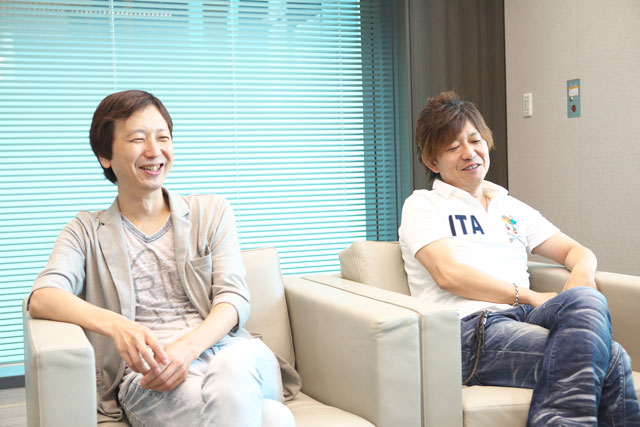
What Sort of “Fantasy”?
Expanding Horizons with Heavensward
―Heavensward made many changes to the world, including increasing the level cap to 60, and making flying mounts available. Were these things also decided far in advance?
Yoshida: Yes, they were. We decided there would be new jobs, a new race, and flying in the expansion. In retrospect, it was a bit much. But at the time, I thought of the expansion as not only sink-or-swim, but as a portent of what was to come. I was considering adding two jobs, but Gondai insisted, “It would be better to have one for each role, so let’s go for it!” And I agreed. I had cause to regret that toward the end of development... [laughs] I also thought that we should add a new race, since we had added female Roegadyn and male Miqo’te in transitioning from 1.0 to 2.0, but not an entire race. Flying had been the norm in modern MMORPGs since the 1.0 days, so that was also planned from the beginning. I also wanted to add swimming, but naturally the workload would have been insurmountable, so we limited it to flying for the time being. Key concepts for Heavensward were “sky,” “dragons,” and “knights,” and the mood expressed through the palette, lighting, and story was to be gothic and mature. That was the broad framework we established when we began development.
―There were many surprising elements, such as the fight with the Knights of the Round on Azys Lla.
Yoshida: We even discussed having Koji write the story in the beginning.
Koji: We did, didn’t we? My son was actually born during A Realm Reborn, and I was so busy at the time that I wasn’t at home much, leaving my wife to deal with everything─so during patch 2.1 and 2.2, I took about six months of parental leave to give her some time off, and thus was out of the office. I didn’t really get work done during that period, but I did jot down some story ideas, and we considered using them in Heavensward. Later on, I spoke with Maehiro and Oda, and they let me get involved in creating the story. In case you’re wondering: my original ideas were a bit different from the story we have in the game, and included having the player visit Ala Mhigo during Heavensward.
―You said earlier that you don’t care for things that don’t actually appear and are relegated to the backstory, but two of the seven great wyrms, Vrtra and Azdaja, have yet to appear. Can we expect them to show up soon?
Yoshida: That was Maehiro’s fault for biting off more than we could chew. Even at the time, I was shocked. “We’re adding seven dragons!?” [laughs]
Maehiro: Well, when you’re talking dragons, it has to be seven! I mean, look at Dragon Ball.
Yoshida: We have a lot of Ascians as well... But I suppose I’m equally guilty. I kept proposing we add the Warriors of Darkness and whatnot.
Maehiro: The world is a big place, so I’m sure all of the seven great wyrms are out there somewhere [laughs].
Preserving the Spirit of FFXIV while Respecting Its Predecessors
―In addition to Azys Lla, the Warring Triad, and the Knights of the Round, Heavensward added Alexander, which appeared in titles such FFVI and FFIX, as an eight-player raid. Is there anything you focus on in particular when basing content around this sort of character, one that has appeared in past games?
Sudo: When working with an existing character, I always research them thoroughly. I figure out their mechanics and how to fit them into FFXIV’s combat system, developing my own logic as to how to incorporate them into the game.
Yoshida: You always seem to test the limits of imagination in so doing [laughs].
―Heavensward’s main scenario includes an original primal, Ravana, alongside the legacy character Bismarck. How do you go about finding balance when you’re incorporating both new and old?
Yoshida: Making those decisions is my job─it’s been part of my role since A Realm Reborn. I had heard that 1.0 didn’t feel enough like a FINAL FANTASY game, so I made Ifrit our first primal fight and otherwise took great care to bring out the “FF-ness” in A Realm Reborn. We did our penance with that, and in Heavensward we were free to create what we liked, thus the new primal. But, in the name of fairness, that meant we had to add a character that had appeared in previous titles as well...and that’s essentially how it works. I create a framework, which takes into account what will appeal to people, and make those decisions. I do think of FFXIV as an FF theme park, but a theme park with only one type of ride would get old fast. Maintaining diversity is important, and keeping the amount of new and legacy elements balanced is a part of that. The same considerations also affect the story and other facets of the game.
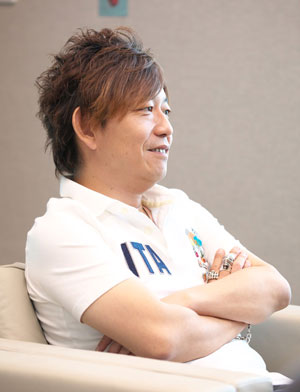
―And that's how you came to include Ravana, a new primal, and Bismarck from FFVI?
Yoshida: I had wanted a character that could fly to go with the “Heavensward” concept, so I may have been overly insistent on Bismarck. With Ravana, the conversation went something like: “There aren’t any insect primals, are there?” “So...Dunbine?*” “Dunbine!” [laughs]
Maehiro: We made our minds up on the spot [laughs].
Yoshida: We also choose the bosses for the raids first. Like, “We should do Alexander after Bahamut!”
―Do you have any stories about designing the Alexander raid?
Sudo: I was told that we wouldn’t be having Alexander appear as a boss during Gordias, and that it would just remain in the overworld. But that was during the best part of development for Heavensward, so I didn’t think too much of it, beyond wondering if we’d maybe fight it in patch 3.4 or so.
Maehiro: We planned Alexander in stages─first it was, “let’s climb the right arm,” then we added climbing the left arm and going inside at the end. As we were discussing what one would find when climbing the right arm, we decided that Faust would be in there for some reason [laughs].
Suzuki: The climax in the original plan had the player using a flying mount to land on the head, didn’t it?
Yoshida: Yeah, like docking a pilder.** But then I was told that it wasn’t possible...
Maehiro: Initially we also said that Alexander would be in the water, and that once the player boarded it, the water would part as it rose up and revealed itself [laughs].
Koji: We had to abandon that idea, but you can still see traces of it in Alexander: The Creator, when you’re taken up to the head in an airship and defeat the guards to gain entry. I think that the result was a very FINAL FANTASY sort of scene.
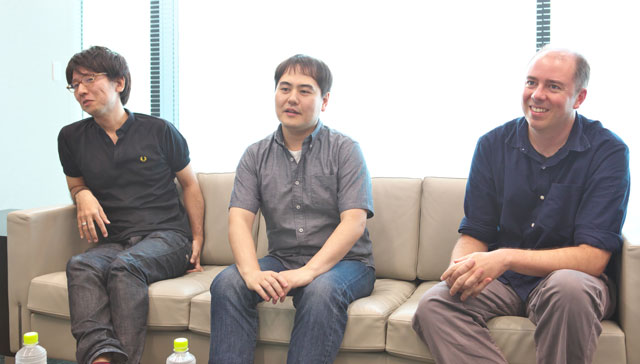
*Aura Battler Dunbine was a 1980’s mecha anime featuring insectoid battle robots.
**In the 1970s anime Mazinger Z, the protagonist would use a small hovercraft called a “pilder” to land atop the head of the titular giant robot and activate it.
The Controversial Gordias (Savage)
―Alexander: Gordias, particularly the savage version, generated a lot of controversy. What was your intent when designing the raid?
Sudo: We had gotten feedback about the Final Coil of Bahamut being too easy, so we felt that we should respond accordingly. Not in a spiteful way─we truly thought that we needed to make it tough in order to meet people’s expectations. I think the general perception was that we needed to make something that wouldn’t be cleared within a month.
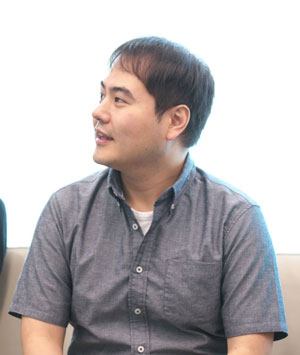
―There were a lot of tricky mechanics, like Digititis and Ferrofluid in sector three, and Judgment Nisi in sector four. How do you come up with those?
Sudo: The Living Liquid in sector three was based on Liquid Flame from FFV, whose magnet mechanic would switch characters between the front and back rows. Ferrofluid is what I figured that would look like if you dropped it into FFXIV [laughs].
All: [laughs]
―Was it hard to make two separate difficulty tiers for normal and savage?
Sudo: Alexander was the first eight-player raid with a savage tier, but we had experience creating separate difficulty levels from our work on A Realm Reborn. I feel like we didn’t struggle too much in balancing normal mode, because the whole team was on the same page in aiming for something with about the same difficulty as a hard-mode primal fight.
―What about the difficulty level for savage?
Yoshida: Gordias (Savage) had a gear check─which is to say that you couldn’t do it unless your gear was above a certain level. While there aren’t four difficulty tiers like in World of Warcraft, we did want there to be a clear difference between the first two and the last two sectors, so we carefully calculated the numbers so that you wouldn’t be able to do sector three without running the first two sectors repeatedly to improve your gear. We balanced it precisely, and that didn’t go over well. Unlike in the Final Coil of Bahamut, players couldn’t progress through all four turns, and with weekly limits, they couldn’t run it over and over. Essentially, we ended up forcing raiders to wait until they upgraded their gear to progress, with nothing to work at in the meantime. Then, on top of all of that, they had to deal with tough mechanics like Judgment Nisi in sector four. I have a lot of regrets, but in retrospect, I do think that our failed experiment in designing based on numbers alone helped us to grow. I would say that we took seriously the feedback on progression in the Final Coil being too quick, and in our attempt to create the “perfect” raid to make up for it, we overcompensated. Then for Midas, we loosened the gear level restrictions and relied more on mechanics─but managed to overdo it again. I think we finally reached a nice balance with Alexander: The Creator.
A Sweeping Narrative Crafted in Intricate Detail
―Heavensward not only features an action-packed story, but we also get to see what makes the characters tick, as well as meeting some fantastic newcomers. Were there any changes in the writing process compared to A Realm Reborn?
Maehiro: The player character is still the star of the show. It’s not like we were trying to write some kind of crazy, multi-perspective narrative. But looking at Heavensward as a whole, it was a chance to show the growth of the other characters, like Alphinaud.
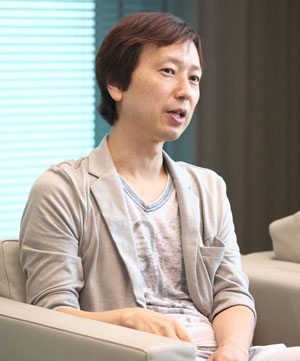
―Some of them proved to be extremely popular with the fans, like Alphinaud, Estinien, and Haurchefant. Was that something you’d anticipated?
Maehiro: If I’d seen it coming, maybe I wouldn’t have received as many angry letters that made me fear for my life! [laughs] Even the person who wrote most of the scenes never imagined there’d be such a huge reaction from the players. One example would be the Heavens’ Ward, which is full of great characters like Grinnaux who the fans love to hate. One thing I regret, though, is that we originally had more scenes introducing each of them in the main scenario, but those parts ended up on the cutting room floor. I feel like we should’ve kept them.
Yoshida: When we were checking the story, we realized that there were too many characters to show all of their backstories, so we had to streamline it. Each member of the Heavens’ Ward is unique, with his own reasons for following Thordan. Some side with him of their own free will, while others are compelled by a sense of duty. So it’s a shame we weren’t able to depict all of this in game.
―It seems like there’s a huge amount of background lore. Does it also include the residents of each city?
Maehiro: Although we don’t give every single person their own backstory, we decide the percentage of each race populating the various regions, and then break it down further according to clan, such as Seekers of the Sun, and so on. For us, it’s important to think about why these people came to live in each area, because this is the foundation on which the entire story is built. And I’m pretty sure that Koji feels the same way.
Koji: Even though the player might be stepping foot in a place for the first time, it’s actually been there for hundreds of years. Every street is there for a reason, because otherwise it’s not a living, breathing place─it’s just a backdrop. In Ishgard’s case, it was built by Eorzeans who’d migrated north from Gridania, so the balance between the types of people who live there reflects that. Maehiro, Oda, and I really focused on making the world of FFXIV feel like somewhere that actually exists. It’s difficult to express all of the lore relating to the residents and the city’s history through the main scenario, so we tried to cover it in the sidequests. I hope that people enjoy piecing everything together for themselves.
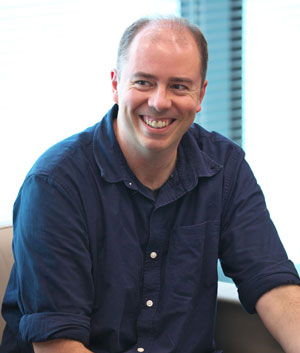
Maehiro: The lore is an essential part of making the world seem real. When you first go to a new place, you have to feel like everything belongs there. As soon as something seems out of place, it takes you out of the experience, and you’re no longer a Warrior of Light, you’re just a character in a video game. That’s why having clearly defined lore is so important.
―It’s impressive that even in a world that sticks so closely to its lore, you can still pull off all these collaborations with other titles, like Yo-kai Watch.
Yoshida: That’s a totally separate issue! [laughs] There’s a difference between placing value in your lore and being so overprotective that it limits your marketing efforts and the kinds of titles you can collaborate with. For the one you mentioned, we deliberately steered clear of using any Heavensward areas, so I think we just about got away with it.
Koji: The wandering executive shows up in Eorzea.
Yoshida: Yes, his homeland is somewhere in Hydaelyn, under the parts hidden by clouds.
Maehiro: And I bet it’s a country roughly the same shape as Fukuoka prefecture... [laughs]
Exploring New Territory
―Raising the level cap to 60 meant a new set of quests for each job. What was behind the decision to introduce new characters for these storylines?
Maehiro: We thought that a change in cast would be a good match for the change in scene. Because Heavensward is kind of the third “season” of FFXIV, we wanted to bring in some new characters.
―Did you come across any problems when writing the quests?
Maehiro: None of the jobs caused us any major issues. I guess one example would be that the guns the machinists use originally came from Limsa Lominsa, so we couldn’t think of a good reason for the quests to take place in Ishgard. In the end, we decided to differentiate the Lominsan musketeers from the Ishgardian machinists. There were already examples of pirates in Limsa using guns, so we sent the player there as part of their training! [laughs] Dragoon was another one. Estinien was showing up in the main scenario at that point, so we had to make sure we didn’t create any inconsistencies between that and the job quests.
―Did the increased number of jobs cause any issues with the combat?
Yoshida: Work on combat is divided between two teams: one that works on the battle system, and one that works on enemies and bosses. The battle team deals with the overall design and balance, as well as requesting the necessary animations. In most MMORPGs, new jobs tend to be overpowered at first and then nerfed later, so we deliberately held back to avoid that situation. Unfortunately, this backfired because they seemed kind of underwhelming in terms of overall strength, which is probably the result of us becoming too accustomed to how MMORPGs work.
―How about the visual design for each job?
Suzuki: The astrologian was the hardest job to design for Heavensward. After it was decided that their weapon would be a globe, there were so many questions we had to answer. How is it going to work? Will they use the globe to whack the enemy? How can we show the cards?
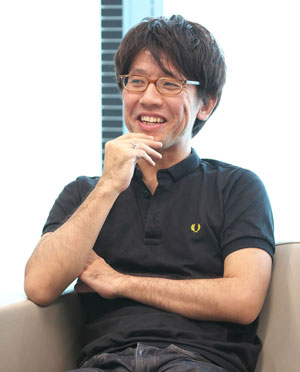
Yoshida: That one was really tricky. We thought about having them draw out a long sequence of cards, one after another.
Maehiro: We just wanted to do the “My turn forever!” thing [laughs].
Suzuki: The combination of globe and card holder that we finally settled on turned out well, I think.
Yoshida: The designers did a great job with that. It has its own unique mechanics and looks absolutely incredible in action.
Suzuki: This is kind of off-topic, but the new areas also caused a lot of headaches.
Yoshida: In A Realm Reborn, one part of the map can have enemies that are level 5, while in another, they’re level 45. If you cross a bridge, you might suddenly find yourself in an area where the monsters are much stronger. From Heavensward onwards, we changed that approach, and now the levels of enemies in a given location are set within a certain range. One place might have monsters from level 51 to 53, for instance. Of course, the introduction of flying mounts was a big part of that decision.
Suzuki: That even affected the way the maps themselves were made. For A Realm Reborn, we were allowed to make each location stretch all the way to the horizon, but with the flying mounts, everything had to look okay when viewed from above, too. You can see a whole lot more when you’re way up in the sky, so we had to consider that as well as how things look from ground level. To make sure that the player could not only see more, but also that those things were displayed correctly, every single thing had to be built using textures and tiny polygons. It was a lot of work.
Maehiro: The lighting caused a lot of problems, too.
Suzuki: We had a hard time with that one, that’s for sure. In A Realm Reborn, there is always a light shining on the player. It’s just a soft glow to make the character look better. The trouble is, for Heavensward, we were asked to create more of a contrast between light and dark, so even the bright areas needed to have shadows that were actually dark, to get the right kind of aesthetic.
Koji: I’d walk past where they were making the maps and hear people yelling at each other [laughs]. “I can’t even see the character!” “We were told to make it dark, so that’s what we did!” [laughs]
Suzuki: The cutscene team would say that sometimes it was hard to make out the characters. Or we’d hear that you couldn’t tell what the enemies were doing. But Yoshi-P would tell us he wanted even more of a contrast [laughs].
Maehiro: In a single-player RPG, you’re the only one there, so it’s fine for everything to revolve around you. With MMORPGS, you’ve got to interact with other players, and not being able to see them is kind of a big deal. This led to fights breaking out all around the studio [laughs].
Suzuki: We had to help the battle team deal with their problems too, and it took a lot of work to solve all the issues. And when we thought we’d finally put this trouble behind us, we looked at Estinien and found out no matter how much light you shined on him, you still couldn’t see him [laughs].
Maehiro: Ah, you mean his armor [laughs].
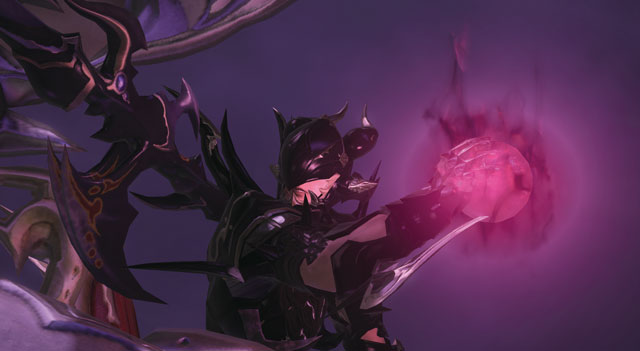
Suzuki: His gear is jet black, and was designed to always look dark even when there’s a lot of light. In A Realm Reborn, everything was brighter in general, so those black parts made him look lean and stylish. But in Ishgard, it’s much darker, so Estinien kind of blended into the background to the point of being almost invisible. When I spoke to Minagawa about it, he checked the black used as the base color for Estinien’s armor and found out it was set to reflect absolutely zero light. No wonder we couldn’t see him! [laughs] Anyway, we made a lot of adjustments to the lighting, taking care not to screw things up for A Realm Reborn areas too. It made me realize how hard it is to change things once they’re already up and running. As for the mounts, I wish we could’ve allowed flying in A Realm Reborn maps, but we just didn’t have the time or resources.
Maehiro: We do our best to avoid any glaring inconsistencies, and when there are problems that we can’t deal with at the time, we try to sneak the fixes in later. Some are really minor things that you wouldn’t even notice from playing normally, but we aim to solve all the issues that need solving.
Reflecting on Heavensward
―Okay, last question. What made the biggest impression on you during your time on Heavensward?
Koji: For me, it was the fact we were able to release the lore book, Encyclopaedia Eorzea. Since way back, there has been a tradition of the FINAL FANTASY series having the Ultimania books to explain the lore that isn’t spelled out in each title. Because I had the chance to help come up with the lore for this title, I knew that about 80% of what we’d come up with didn’t make it into the game, and because I knew how hard we’d worked on it, I thought it would be a shame for it to go to waste. For A Realm Reborn, everyone had their hands full with development, so there was nothing we could do about it, but when Heavensward came around, we found an opening in the schedule, and the scenario team decided to put together a lore book. That’s when we ran into another problem, because we realized that if we wanted to sell it overseas, we’d need people who know the game inside-out to stand a chance of translating it into English. There’s no way they’d be able to do it if they didn’t know FFXIV, but the localization team already had other work to do, so we couldn’t ask them to take care of it. But we knew the overseas players really wanted us to release a lore book, and even though it was a lot to ask of the team, we decided to publish an English version too. I think the fans appreciated the work that went into it. Even though it ended up doubling our workload, pushed Oda and myself to our limits, and made us swear we’d never try to do anything like that again, we decided to make a second volume! [laughs] The thought of coming up with another three hundred pages is kind of scary, but I think the players will enjoy it!
Sudo: At one point around Patch 3.4 or 3.5, I was playing at home and went to Idyllshire, where I noticed the huge crowd of players, many of whom were beginners with the little sprout icon. This was when we had released the Alexander raids─going overboard with gear checks in Gordias, then overdoing it with mechanics in Midas. I thought that we had struck a pretty good balance with the Creator, but seeing that crowd made me remember who we're making this game for. I realized that though content for our veterans is important, we also need to do our utmost in the next expansion to create an experience that new players will love as well. As I sat there in front of my PC, I felt a renewed sense of conviction, and I plan to keep that feeling with me as I continue to design for FFXIV.
Suzuki: It feels like I only remember all the struggles I’ve been through, like having to totally rethink the way I look at the in-game world because of the flying mounts, designing the new jobs and races, and trying to update the overall look of the game. But at the same time, the fact that the work we put into expanding and enhancing FFXIV has been so well received has made it all worthwhile. Rather than presenting the characters and environments in a plain, unaltered state, I’ll do whatever I can to bring out the best in them.
Maehiro: After launching A Realm Reborn as a standalone game, we started working on Heavensward while we were still in the middle of making the post-launch patches. As a result, we built up all kinds of useful skills and experience, like how to structure the main scenario, and how to put together the job quests and sidequests, so we now have a basic format in place that we can use in the future. I think this led directly to us getting Heavensward to its finished state. Obviously there will be a lot more added to the game, and just because we have our format in place doesn’t mean it’ll be easy to write new storylines and quests. But at the very least, I’m glad we were able to lay the foundation for what’s to come.
Yoshida: For me, Heavensward was the first FINAL FANTASY title that I’ve been there to help build from the ground up─everything from the story to the characters and sound. It was a hugely rewarding experience. We all went through hell and back to get it finished, but because of that, I really feel that we gave it everything we have. Our work on Heavensward has determined the direction of FFXIV as a whole, and the feedback we received along the way was a huge part of that, so I’m extremely grateful to our players.
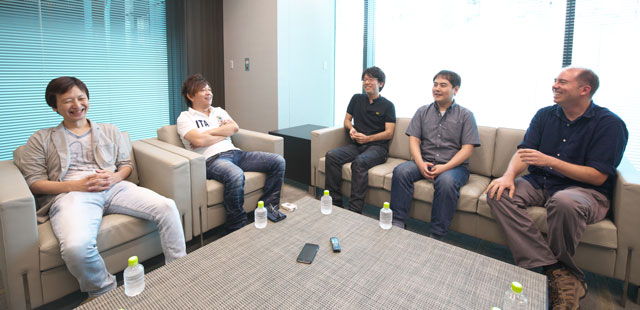
This article was originally published in the FINAL FANTASY® XIV: Official Magazine – 5th Anniversary Edition, which went on sale in Japan on October 18, 2018.


